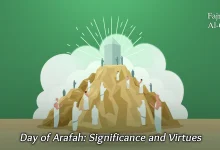Isha Prayer: How to Perform It Correctly

The Isha prayer is the fifth and final of the five obligatory daily prayers in Islam, and it is a four rak’ahs cycle of prayer.
The Isha prayer begins after Maghrib (sunset prayer) and continues until midnight or, according to some scholars, until Fajr (dawn).
What is the Isha Prayer?
Isha prayer is the fifth and final salah (Islamic prayer) of the day.
It is performed at night, after the twilight has completely disappeared.
Isha prayer serves as the closing chapter of a Muslim’s daily worship cycle.
Following the Maghrib prayer and preceding the Fajr salah of the next day.
Performed in solitude or jama’ah (congregation) at a masjid.
It’s a moment of deep connection with Allah (SWT) and a way to conclude the day with peace, reflection, and blessings.
For Muslims around the world, understanding the correct time, method, and virtues of Isha is essential to properly fulfilling this critical act of worship.
Leading platforms like Fajr Al-Quran Academy help Muslims learn not just Isha, but also all five daily prayers, Fajr, Dhuhr (zuhr), Asr, Maghrib, and Isha, through detailed lessons, videos, and practical steps.

The Importance of Isha Prayer
The Isha prayer holds great significance in Islam.
Isha prayer is one of the five daily prayers and is considered an act of devotion and obedience to Allah.
The Prophet Muhammad (peace be upon him) emphasized its importance.
Saying that the most burdensome prayers for the hypocrites are Isha and Fajr, yet if people knew the rewards, they would come even if they had to crawl (Sahih al-Bukhari).
Performing the Isha prayer brings spiritual comfort and serenity after the day’s busyness. It allows Muslims to seek forgiveness, thank Allah, and ask for protection through the night.
The Isha prayer also includes the Witr prayer, a Sunnah prayer (salah) that further strengthens one’s spirituality and connection with the Creator.
In many Islamic centers, special jumu’ah prayer events with an imam, Friday lectures, and monthly newsletters emphasize the importance of this prayer (salah).
And encourage regular participation, especially among new Muslims.
Isha Prayer Times
The time for Isha prayer starts when the red twilight disappears after sunset, which is the time when Maghrib ends.
Salah Isha can be prayed anytime until midnight, which is calculated as the middle point between sunset and sunrise of the next day.
Many cities and mosques provide a prayer timetable or salah schedule to help Muslims keep track of accurate prayer timings.
These tables are often downloadable via an app or available on the masjid website.
The iqamah timings (the actual timings when the congregation (jamā’ah) of al prayer begins) may vary slightly based on the mosque or Islamic center.
For example, during July, the Isha time in cities like New York or London may begin as late as 10:00 PM and extend until midnight.
Platforms like Fajr Al-Quran Academy offer apps and digital tools to check accurate timings for Fajr, Dhuhr, Asr, Maghrib, and Isha, based on your city and region.

Number of rak’aats Isha Prayer
The Isha prayer consists of four obligatory rak (units), known as Fard.
However, it is combined with additional non-obligatory prayers for increased reward and spiritual development.
Here are the many rakat of Isha Prayer:
4 Rakats Sunnah (non-obligatory, before or after)
4 Rakats Fard
2 Rakats Sunnah Mu’akkadah (strongly recommended after Fard)
3 Rakats Witr (after Sunnah)
In total, a Muslim may pray up to 13 rakats during Isha time, depending on their personal devotion and time availability.
While the Fard rakats are mandatory, praying Witr and Sunnah is highly encouraged as it was the consistent practice of the Prophet (peace be upon him).
Each rak’ah includes (saying t“allahu Akbar”), recitation of Surah Al-Fatiha, followed by another surah or Quranic verse, bowing (ruku), prostration (sujood), and ending with the tasleem (salutation of peace).
How to Perform Isha Prayer
Performing the Isha prayer correctly requires understanding the basic steps of salah.
Here’s a step-by-step guide to perform the Isha prayer:
1– Ensure purity (Wudu) – Begin by performing ablution.
2– Face the Qibla – Stand facing the direction of the Kaaba in Makkah, the start of prayer.
3– Make the intention (niyyah) – Silently intend to pray the
4– Takbir al-Ihram – Lift your hands to either side of your head and say, Allahu Akbar.
5– Read Surah Al-Fatiha, followed by another portion of the Quran.
- Ruku (Bowing): Bend at the waist, keeping your back straight, and say “Subhana Rabbiyal Azeem” (Glory be to my Lord, the Exalted).
- Standing up from Ruku: Rise and say “Sami’a Allahu liman hamidah, Rabbana lakal hamd” (Allah listens to those who praise Him, our Lord, all praise be to You).
- Sujud (Prostration): Go down into prostration, placing your forehead, nose, palms, knees, and toes on the ground. Say “Subhana Rabbiyal A’la” (Glory be to my Lord, the Highest).
- Sitting between Sujud: Sit back on your heels and say “Rabbighfirli warhamni, wa’afini, wahdini, warzuqni” (O Allah, forgive me, have mercy on me, grant me well-being, guide me, and provide for me).
- Second Sujud: repeating the supplications from the first.
- Second Raka’ah: Repeat steps 4-10.
- Sitting for Tashahhud: After the second prostration of the second rak’ah, read the Tashahhud (a prayer of attestation).
- Third and Fourth Raka’ah: Repeat steps 4-10.
- Final Tasleem: Turn your face to the right and say “Assalamu Alaikum wa Rahmatullahi wa barakatuh” (Peace be upon you and the mercy of Allah and His blessings) and then turn your face to the left and repeat the same.
How to perform Sunnah and Witr prayer
To perform the Sunnah and Witr prayers after the Isha prayer, start with the two rak’ahs of Sunnah Mu’akkadah (emphasized Sunnah).
And followed by one or three rak’ahs of Witr.
Witr can be prayed immediately after the Isha Sunnah or just before sleep.
After completing the 4 Fard rakats, you may perform the Sunnah prayer and Witr prayer if you choose
Fajr Al-Quran Academy offers video tutorials, a live lecture. And practice sessions.
For learning the correct posture, pronunciation, and spiritual focus required in every rak.
Whether you’re a new Muslim or view a prayer, their resources are a trusted tool for mastering the Isha prayer.

Virtues of Isha Prayer
Pray, the Isha prayer is rich in blessings and rewards, especially when performed consistently and in congregation (jama’ah).
Some of its major virtues include:
Forgiveness of sins – Praying Isha and Fajr in jamā’ah leads to immense reward and the cleansing of sins.
Protection through the night – A hadith mentions that whoever prays Isha in congregation (jamā’ah) is as if they prayed half the night.
Also, praying Fajr in congregation (jamā’ah) completes the reward of praying the whole night.
Peaceful sleep – Performing Isha helps calm the heart, body, and mind, granting a peaceful rest.
Reward of Qiyam – Combining Isha with Witr resembles the nightly prayer (Qiyam al-Lail), which brings great reward.
Especially during Ramadan, Muharram, and special nights.
Strengthening community bonds – When Muslims gather for Isha at the mosque.
It builds a strong sense of brotherhood and unity in the Islamic community.
Many Jumu’ah khutbahs, Thursday night events, and Islamic lectures stress the significance of Isha prayer.
Encouraging families to make it a shared practice.
Even apps that track prayer time or show reminders for adhan and iqamah promote consistency and devotion.
Fajr Al-Quran Academy is instrumental in spreading this knowledge.
To learn how to pray Maghrib, Isha, Fajr, Dhuhr, and Asr,
Offering lessons not only on how to perform Isha correctly.
But also, why it’s important to stay consistent and learn the meaning behind every word and action.
Conclusion
The Isha prayer is not merely a routine but a beautiful closure to a Muslim’s day.
It marks the transition from the demands of the world to the serenity of night.
Reminding us to submit, reflect, and rest in the remembrance of Allah.
Whether you’re new to Islam, returning to your prayers, or trying to teach your children.
Knowing the correct method, timing, and benefits of Isha is essential.
Thanks to trusted learning platforms like Fajr Al-Quran Academy, Muslims of all backgrounds can learn.
And watch instructional videos, and even attend live jamā’ah sessions online.
You’re just a few steps away from turning your prayers into a source of immense reward and spiritual growth.
Start to let every night end with light.
Make Isha prayer your commitment and let your soul find peace in the holy words of the Quran before you sleep.








